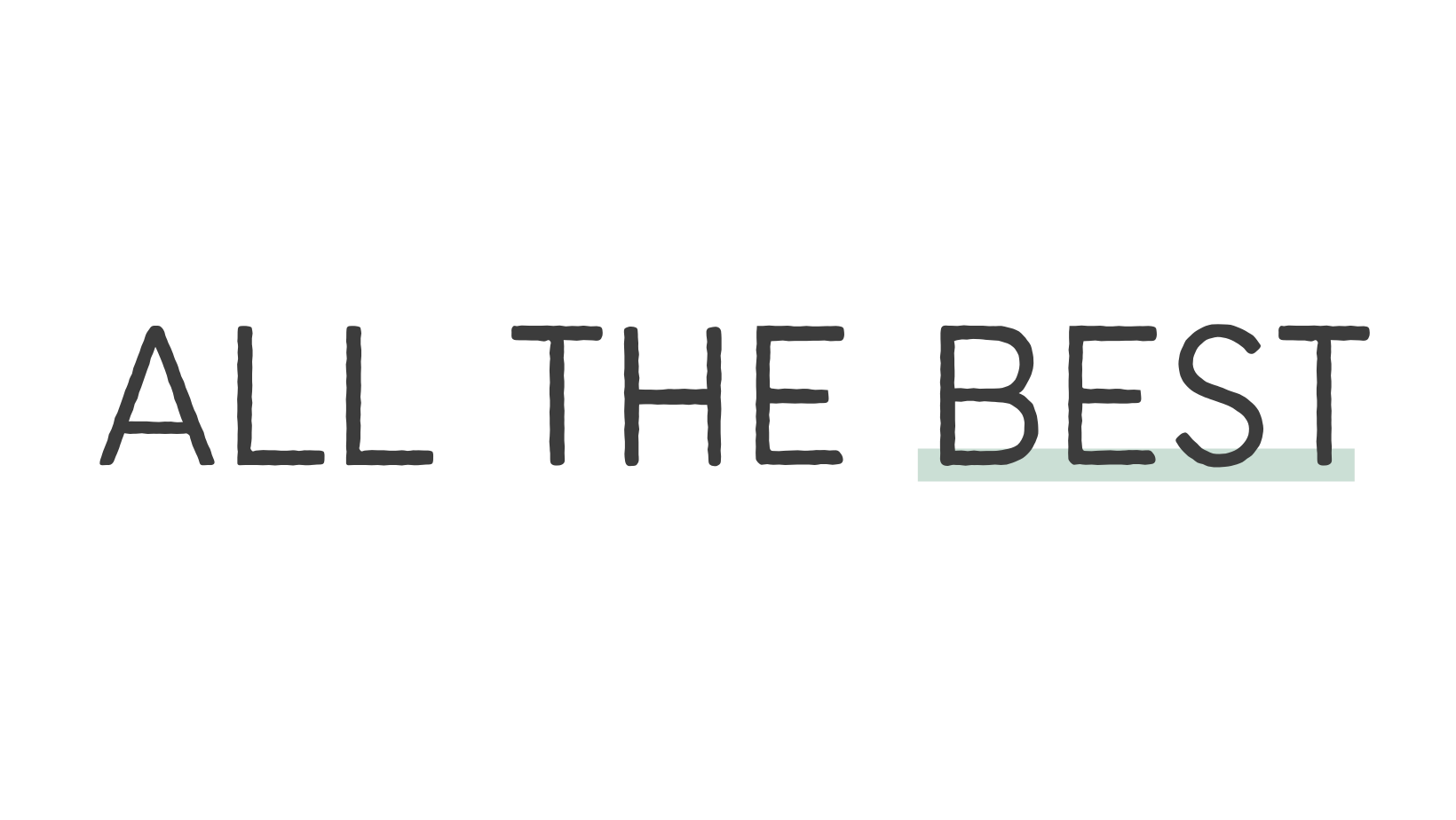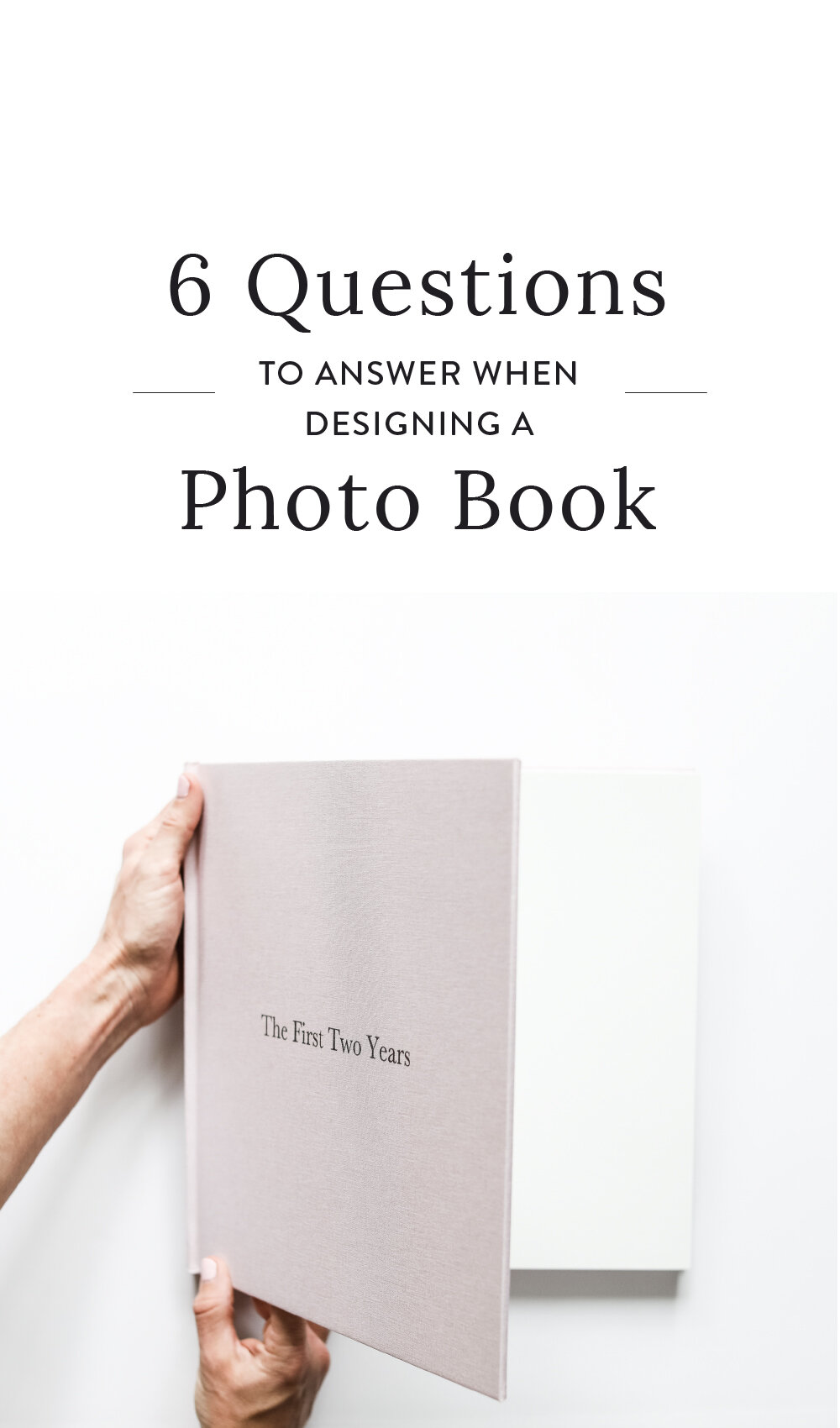6 Questions to Answer When Choosing Where to Print your Photo Books
One of the biggest sources of overwhelm is too many choices.
And when it comes to printing a photo book, the options these days are endless.
I recently wanted to print a softcover photo book and found myself running down rabbit holes on the internet, getting lost in the process of just picking a vendor to print my book.
Someone could accuse me of overthinking this, but when you’re investing time and money on printing your memories, you want to make a wise decision.
I put together this series of questions to help you (and me!) as we choose where to print our projects.
QUESTION 1
What’s the scope of your project?
If you’ve followed me for any amount of time, you know I’m big on beginning with the end in mind. I believe this is essential when it comes to dealing with the overwhelm that can be associated with our memories.
First things first for any photo book project: What is the scope of memories you’re including?
Define the time period and define the topic - clearly!
For example:
A one-week family vacation to Hawaii
A year in your family’s life
10 years of marriage
The holiday season 2017
Note that each of those has a time period AND a topic.
I think we tend to focus too much on the final project before considering what we actually need.
We see pocket page albums and love the look and creativity, so we jump into that type of project without first considering the scope of memories we want to include.
Once you know those two things - the time period and the topic - you can start to think about the type of photo book that would best fit the scope of your project.
Why? Because if you’re documenting a family vacation, you might not need 150 pages to do it.
Photo books are limited in space.
Depending on the style of book you want to print and the vendor you choose, you’re going to be limited.
Artifact Uprising’s layflat books are beautiful, but they include far fewer pages than Milkbooks.
Define your scope FIRST, and then you’ll know how much space you need.
Question 2
What’s your budget?
This is so important to consider. Many photo book vendors have beautiful options, but their prices are at a premium.
That said, lots of budget-friendly photo book companies have really stepped up the quality of their printing, binding, and paper options.
It’s a balance - you want to invest in high quality materials while also including as many memories as you’d like.
One tip is to find your vendor and design your photo book but hold off on purchasing until you get a sale or discount code.
Some vendors will even email you a code if they see you’ve stepped away from your finished project without purchasing.
You can usually store your project without buying it (for quite awhile) and just wait to print until the price is right, if you have some time.
I always recommend waiting until the website offers a sale or discount. The big ones usually have some kind of promotion running regularly.
All that said, budget is a biggie.
Large, hardcover, layflat books can run up into the hundreds of dollars. And while I think your memories are worth every penny, I understand that families have a wide range of budgets.
The great news is that there are beautiful options these days at every price point.
Question 3
Do you prefer hardcover or softcover for this project?
I like to choose the type of cover I want to use for a project pretty early in the process. It helps eliminate lots of options and gets me focused right off the bat in my research.
Hardcover books have more a formal feel, especially if the cover is linen or cloth-bound (imo).
Softcover books feel more playful, informal, and accessible.
Of course, a hardcover book with a colorful photo on a dust jacket might invite someone to flip through it.
Think about where you want to store your book. Do you want to leave it on a coffee table? Keep it tucked away? Do you want people to reach for it and flip through it?
These considerations and the “feel” of a softcover vs a hardcover book are totally subjective, but I think it’s worth considering how YOU feel about each option and which fits best for your project.
Grab my guide to photo books
You’ll get a checklist and my complete process for finishing a photo book delivered to your inbox.
Question 4
What paper stock do you prefer?
As a former stationery designer, I have some very strong opinions about the type of paper I use for photo books.
Just like with the softcover / hardcover considerations, you might have particular opinions that are unique to you.
Generally speaking, photo book paper stocks fall into one of two broad categories:
Matte
Coated
Coated papers are more like a photo paper. They have a glossier sheen to them, a “coated” feel.
The photos and colors really pop, and these papers are designed to really showcase the original qualities of the photos themselves.
Think about coffee table books or your kids’ picture books. Glossier papers have more saturated colors in the photos. They’re crystal clear and really pop.
Matte papers have a dull finish that doesn’t have a sheen to them.
Think cardstock or art paper as opposed to photo paper.
Some photo book printers, like Milkbooks, even offer a paper stock that has some texture to it.
The colors in your photos will appear a lot more muted than on a coated paper stock.
This is definitely a “look” - your photos won’t appear the same as on your computer screen so be sure to look at examples on your vendor’s website.
My preference is matte paper, but that’s just a personal preference.
You use what makes the most sense for your style, your photos, and your preferences!
Question 5
What binding and size do you prefer?
There are lots of binding options out there these days, but one of the big considerations here is whether you’re dead-set on having layflat pages (or nearly layflat).
The price swing here can be dramatic between the two options, and layflat books tend to have smaller page counts.
A big benefit of layflat pages is the ability to span one photo across two pages.
That’s a great option to have if you have beautiful, professional photos to include OR if you’re planning to only include a few photos in your project.
If, however, you’re using mainly snapshots from your phone and you want to include lots of photos, layflat pages aren’t necessary.
You’ll still be able to flip through your book and enjoy it even if the binding isn’t perfectly “layflat.”
Another option that goes hand-in-hand with binding is the size and shape.
I’m partial to portrait-style books. I like holding them in my hand.
I would never print a landscape photo book simply because I don’t like the feel of those wide pages and flipping through them, so I stick to square or portrait.
However, some vendors won’t offer portrait-style books in a particular style, so it’s something to consider.
What binding and size do you prefer?
Question 6
How many pages do you need?
Photo books are limited in their size. You can’t just print as many pages as you want in many vendor projects.
Depending on how big your project is, you’re going to need to look carefully at page count.
Are you okay with 40 pages as your limit? Or will you need over 100?
Also, pay attention to how the price increases with your page count. Layflat options, in particular, can be very pricey per page.
If you’re doing a big, family yearbook-style project, you’ll want a higher page count. If the hardcover options are getting too expensive, think about a softcover.
The options out there are abundant, but you’ll need to think about the number of pages you want to include (approximately) and definitely whether this is a large or small project.
Other considerations:
White or off white paper
Cover style / dust jacket / imprinted titles
Turnaround time
Ease of software
Ability to customize layouts
Ability to store / save projects (so you can print them again in the future)
There are so many things to consider when it comes to actually getting your photos uploaded into a website and designing the project.
But when it comes to getting started, these are the primary things I note right at the start of every project.
And once I’ve done the research and found a vendor that works for the particular project I’m doing, I can go ahead and use that vendor, shape, size, paper stock, etc for subsequent projects.
Therefore, it’s worth my time to do the work up front and find the right fit.




